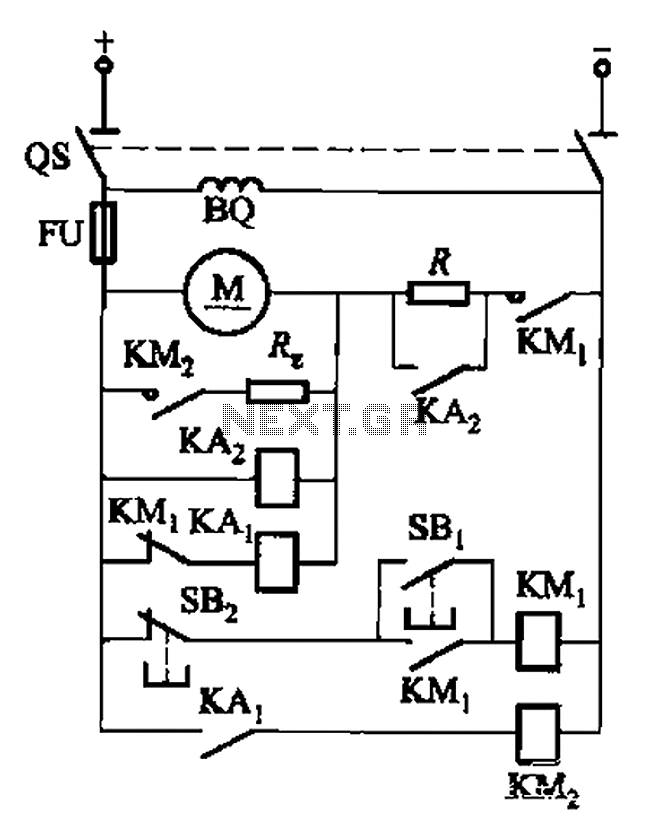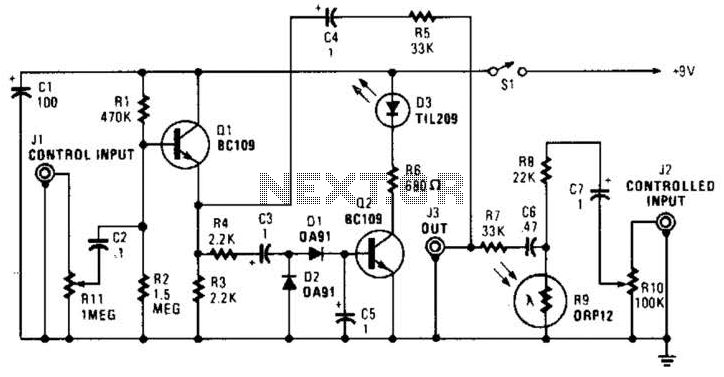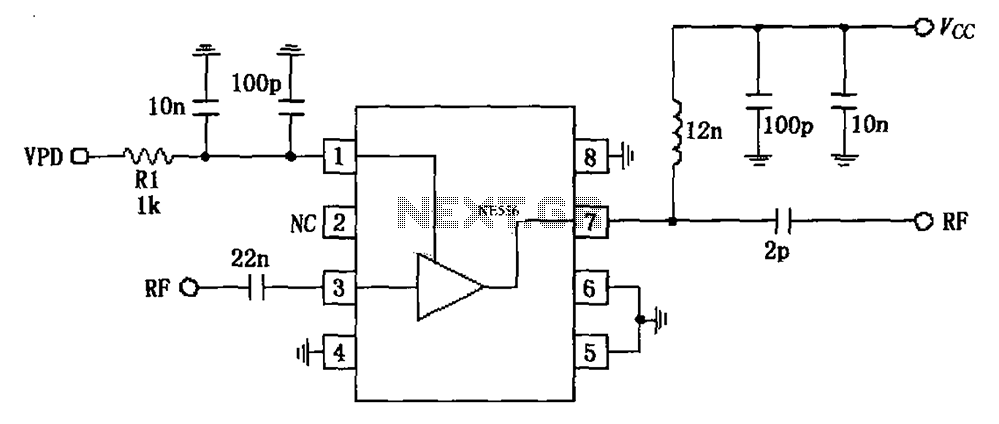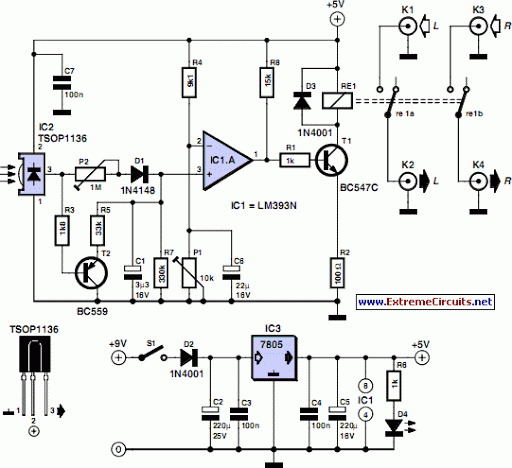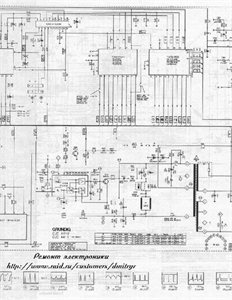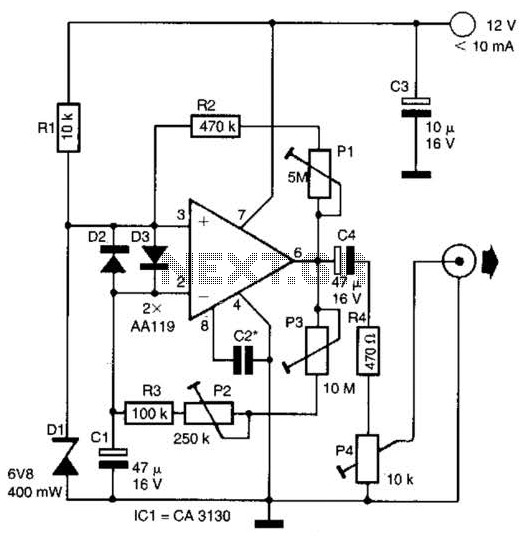
3V to 40 Volt DC Converter Circuit
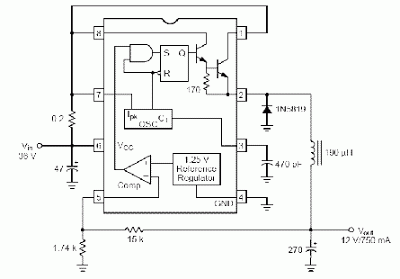
Switching regulator subsystems intended for use as DC to DC converters. 3V to 40 Volt DC Converter circuit. The use of switching regulators is becoming more pronounced than that of linear regulators because the size reductions in new equipment designs require greater conversion efficiency. Another major advantage of the switching regulator is that it has increased application flexibility of output voltage. The output can be less than, greater than, or of opposite polarity to that of the input voltage. The MC34063 series is a monolithic control circuit containing all the active functions required for DC to DC converters. This device contains an internal temperature compensated reference, comparator, controlled duty cycle oscillator with an active peak current limit circuit, driver, and a high current output switch. This series was specifically designed to be incorporated in step-up, step-down, and voltage inverting converter applications. These functions are contained in an 8-pin dual in-line package.
The MC34063 series switching regulator is a highly versatile and efficient solution for converting DC voltage levels. This device operates within a wide input voltage range, making it suitable for various applications, from battery-powered devices to industrial equipment. Its ability to provide outputs that can exceed, match, or invert the input voltage is particularly beneficial in systems where different voltage levels are required.
The internal architecture of the MC34063 includes a temperature-compensated reference voltage, which ensures stable operation across varying temperature conditions. The comparator monitors the output voltage and adjusts the duty cycle of the oscillator accordingly, maintaining the desired output level. The controlled duty cycle oscillator is a critical component that manages the switching frequency of the regulator, optimizing efficiency while minimizing heat generation.
The active peak current limit circuit is an important safety feature that protects the device from overcurrent conditions, enhancing the reliability of the circuit. The high current output switch allows for efficient power delivery to the load, enabling the regulator to support higher current applications without significant losses.
This device is housed in an 8-pin dual in-line package (DIP), facilitating easy integration into various circuit designs. The pin configuration allows for straightforward connections to input voltage, output voltage, ground, and feedback paths, simplifying the design process for engineers. Overall, the MC34063 series switching regulator is an excellent choice for applications requiring efficient DC to DC conversion with flexible output options.Switching regulator subsystems intended for use asdc to dc converters. 3V to 40 Volt DC Converter circuit | The use of switching regulators is becoming more pronouncedover that of linear regulators because the size reductions innew equipment designs require greater conversion efficiency. Another major advantage of the switching regulator is that it has increasednapplication flexibility of output voltage. The output can be less than, greater than, or of opposite polarityto that of the input voltage. The MC34063 series is a monolithic control circuitcontaining all the active functions required for dc to dcconverters. This device contains an internal temperaturecompensated reference, comparator, controlled duty cycleoscillator with an active peak current limit circuit, driver, and a high current output switch.
This series was specificallydesigned to be incorporated in step up, step down andvoltage inverting converter applications. These functionsare contained in an 8 pin dual in line package. 🔗 External reference
The MC34063 series switching regulator is a highly versatile and efficient solution for converting DC voltage levels. This device operates within a wide input voltage range, making it suitable for various applications, from battery-powered devices to industrial equipment. Its ability to provide outputs that can exceed, match, or invert the input voltage is particularly beneficial in systems where different voltage levels are required.
The internal architecture of the MC34063 includes a temperature-compensated reference voltage, which ensures stable operation across varying temperature conditions. The comparator monitors the output voltage and adjusts the duty cycle of the oscillator accordingly, maintaining the desired output level. The controlled duty cycle oscillator is a critical component that manages the switching frequency of the regulator, optimizing efficiency while minimizing heat generation.
The active peak current limit circuit is an important safety feature that protects the device from overcurrent conditions, enhancing the reliability of the circuit. The high current output switch allows for efficient power delivery to the load, enabling the regulator to support higher current applications without significant losses.
This device is housed in an 8-pin dual in-line package (DIP), facilitating easy integration into various circuit designs. The pin configuration allows for straightforward connections to input voltage, output voltage, ground, and feedback paths, simplifying the design process for engineers. Overall, the MC34063 series switching regulator is an excellent choice for applications requiring efficient DC to DC conversion with flexible output options.Switching regulator subsystems intended for use asdc to dc converters. 3V to 40 Volt DC Converter circuit | The use of switching regulators is becoming more pronouncedover that of linear regulators because the size reductions innew equipment designs require greater conversion efficiency. Another major advantage of the switching regulator is that it has increasednapplication flexibility of output voltage. The output can be less than, greater than, or of opposite polarityto that of the input voltage. The MC34063 series is a monolithic control circuitcontaining all the active functions required for dc to dcconverters. This device contains an internal temperaturecompensated reference, comparator, controlled duty cycleoscillator with an active peak current limit circuit, driver, and a high current output switch.
This series was specificallydesigned to be incorporated in step up, step down andvoltage inverting converter applications. These functionsare contained in an 8 pin dual in line package. 🔗 External reference
